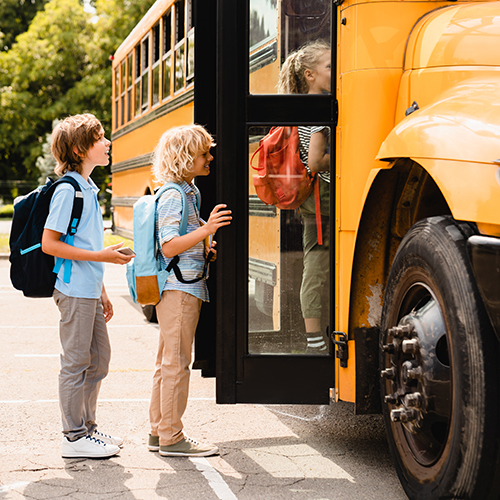April 2020
Children rely on well-known routines to get them through the day. This is why a typical school day often has a calming effect on kids, even though they’re busy. There’s a predictable rhythm to getting up and ready for school, having a relatively fixed schedule during the school day and spending time at home after school.
But what happens while school is out? Kids may feel disoriented — and sometimes downright crabby — when there’s no predictability to their day. Here are eight ways to maintain a sense of normalcy when school isn’t part of the daily schedule.
Maintain a consistent sleep schedule.
Set bedtimes and wake-up times add predictability to a child’s day. When school is out, those times don’t have to be the same as when school is in session (unless that’s what works best for your family). Choose a bedtime that fits with your family’s non-school rhythm. If your child struggles to fall asleep at their designated bedtime, implementing a consistent wake-up time can help.
Have a morning routine.
Just because school is out doesn’t mean you shouldn’t maintain a morning routine. If fact, a consistent routine will help structure your child’s day. It will also ensure that the essentials get accomplished — like eating a healthy breakfast, brushing teeth and taking care of the family pet. A nice addition to the morning routine: getting outside, even if it’s just for a short walk or a bike ride around the block. This offers the same perks as walking to the bus stop or to school: fresh air, daylight and movement.
Match your clothes to the time of day.
When kids don’t have to get to school, it’s easy for them to lounge in their pajamas all day. While this is fine on an occasional lazy Sunday, when school’s out for an extended period of time, this habit can become a slippery slope where night blends into day and the days blend into each other. To avoid this rut, make sure kids get into clean street clothes during the day (comfy sweats or leggings and t-shirts are fine) and into pajamas at night.
Have a rough schedule for the day.
One of the reasons the school day can be so calming for kids is that they know what’s coming — math at 8:30 a.m., reading at 9:30 a.m., recess at 10:30 a.m., lunch at noon, etc. While you don’t need to plan your school-free days down to the minute, a general idea helps to create a family schedule with some basic timeframes outlined.
Simply including mealtimes, one outside walk, one family activity and bedtime can be soothing for a child. Post it somewhere prominent and review it every day.
Create touchpoints throughout the week.
When school is in session, it’s easier to track the days of the week because most days have something unique that makes them stand out. Monday starts the school week. Maybe Tuesday has music lessons and Thursday has soccer practice. Friday ends the school week, and the weekends are distinctly different from the weekdays. As an alternative, create your own family touchpoints throughout the week. One day per week can be family movie night, while another night might be family game night. Maybe you bake cookies on one day, whip up a batch of blueberry pancakes another and have a dedicated make-your-own pizza night.
Focus on age-appropriate learning.
Learning doesn’t have to stop just because school is out. This can be a great time to help your child with academic skills with which they’ve struggled — or to create opportunities for your child to go deeper into a topic in which they’ve expressed interest.
However, the focus on learning doesn’t have to be “academic.” Learning can also include self-care skills, like how to tie shoes or wash hair, or life skills, like making a sandwich or unloading the dishwasher.
Get outside every day.
From walking to and from school (or the bus stop) to getting outside for recess (and maybe even gym class), attending school every day provides great opportunities for kids to get fresh air, daylight and movement. Unfortunately, without the familiar rhythms of the school day, it’s easy to have the sun set without setting foot outside. However, it doesn’t have to be that way. Family walks or bike rides and some simple games in the yard can ensure that your child gets the benefits of fresh air and movement every day.
Maintain a bedtime routine.
Whatever your family does on typical school nights could be carried over, even if your child’s bedtime itself skews a little later without school. The evening is still a great time for picking up toys, cleaning up from dinner, taking a bath or shower, reading a story – and, of course, brushing and flossing teeth! If you find you have a little extra time now that you’re not swamped with after-school activities and homework, feel free to add a family walk or game night to the pre-bedtime routine. The familiarity of the routine will help to end-cap your child’s day and help them feel grounded even when school is out.



